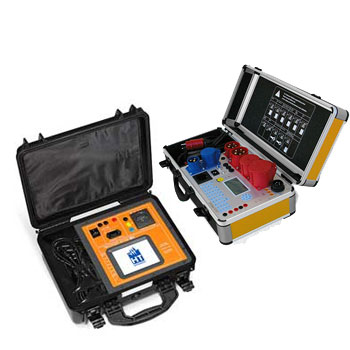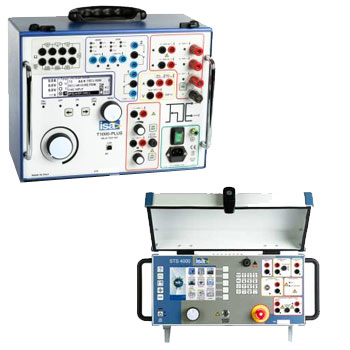
Temperature Calibrators – dry-wells, liquid baths & blackbodies for traceable results
Temperature calibrators provide stable, uniform and repeatable temperatures to calibrate RTD/PRT, thermocouples, thermistors, as well as IR thermometers and thermal imagers. Available as block calibrators (dry-well), liquid baths, furnaces and blackbody sources—from portable field units to lab-grade standards.
Key features (model-dependent): temperature ranges about −35…+650 °C (dry-well), −80…+300 °C (baths), +50…+1,200 °C (blackbodies); stability to ±0.005 °C, uniformity ≤0.02 °C, multi-zone control, external reference probe inputs, multi-channel measurement, ramp/soak, procedures, USB/LAN, HART/Modbus and CSV/PDF export.
ICS Schneider Messtechnik supports selection, uncertainty budgeting, sleeve/insert design, procedure creation and supplies optional factory/DAkkS certificates for calibrator and reference probes.
FAQ on Temperature Calibrators
Answers on principles, accuracy, stability, sleeves, immersion, IR testing, safety and best practices.
What are the differences between dry-well, liquid bath and blackbody?
Dry-well: fast, portable, clean (requires sleeves). Liquid bath: best uniformity and heat transfer, but needs media handling. Blackbody: non-contact for IR/optics.
What do stability, uniformity and accuracy mean?
Stability = temporal fluctuation at one point; uniformity = spatial evenness within the block/bath; accuracy = deviation from true value (determined with a reference).
Why use an external reference probe?
The calibrator’s block display may not equal the DUT tip temperature. An external reference placed near the DUT minimizes gradient and coupling errors.
How do I choose the right sleeve/insert?
Bore diameter DUT Ø + 0.1…0.2 mm, tight fit over full depth; high-conductivity materials (aluminum/copper below 300 °C, Inconel/stainless at high T). Use multi-hole inserts to separate reference and DUT.
How much immersion depth is needed?
At least 15–20× the sensor diameter or past the sensing element. For short probes use extended sleeves. Add a top cap to reduce convection.
How do I build an uncertainty budget?
Combine contributions from reference accuracy, stability, uniformity, indicator resolution, self-heating, hysteresis, heat loss and repeatability; expand with k=2.
What point sets/procedures are common?
Typical points −20/0/50/100/150/200 °C (application dependent). At each point observe a stability criterion (e.g., 60–300 s ≤±0.02 °C) and include up/down runs for hysteresis.
How do I calibrate thermocouples correctly?
Place the hot junction in the calibrator, enable cold-junction compensation on the instrument or measure a separate reference junction; ensure tight thermal coupling at the hot end.
Tips for PRT/RTD calibrations
Use four-wire measurement, keep test current low (limit self-heating), allow adequate stabilization time, and decouple cable strain.
How do I test IR thermometers/thermal imagers?
With a blackbody source: set correct emissivity (ε≈0.95…0.99), use proper distance/focus, ensure the aperture exceeds spot size, and minimize drafts/reflections.
What warm-up and stabilization times should I expect?
Dry-wells: minutes to a few tens of minutes per step. Baths: longer but very uniform. Blackbodies: depend on cavity/mass—wait until the stability criterion is met.
How often should I recalibrate?
General guidance is annually; for quality-critical processes consider semi-annual/quarterly. After repair/transport, perform an interim check (e.g., ice point/fixed points).
Can I calibrate multiple sensors at once?
Yes—with multi-hole sleeves or baskets (baths). Mind the loading: too many DUTs increase gradients. Keep the reference close to DUT tips.
How do I handle axial/radial gradients?
Use insulating caps, fill sleeves fully, center the DUTs, reduce load, and consider multi-zone blocks if available.
What safety topics matter?
Heat protection, burn prevention, media handling for baths (vapors/ignition sources), over-temperature protection, stable setup and appropriate PPE.
Which bath fluid should I choose?
Alcohols (<0 °C), silicone oils (wide range), salt baths (high T, corrosive). Consider viscosity, flash point, evaporation and compatibility.
How do I document in a compliant way?
Include as-found/as-left, point list, stability window, ambient data (T/RH), traceability chain, expanded uncertainty and signature/e-signature; export PDF/CSV.
What should I consider for portable work?
Weight, power draw, heat-up/cool-down times, carry case, protective sleeves, AC/battery options and field logging.
What typical mistakes should I avoid?
- Oversized sleeve bores → poor thermal coupling and drift.
- Insufficient immersion → stem/conduction errors.
- Too little stabilization → higher repeatability errors.
- Reference far from DUT → uniformity errors.
Do you help with selection, sleeves and procedures?
Yes—we size the calibrator/reference, design sleeves/inserts, create templates (ramp/soak, points), supply accessories and provide factory/DAkkS certificates.














































































































































































